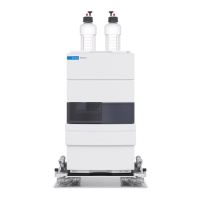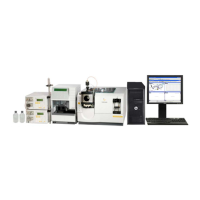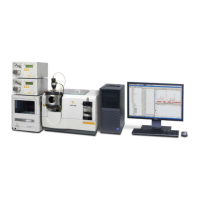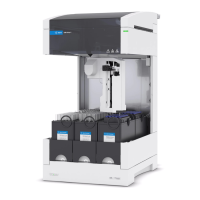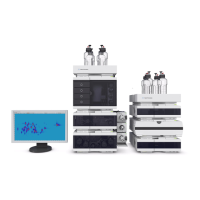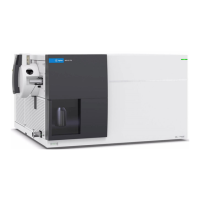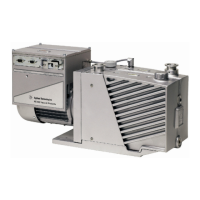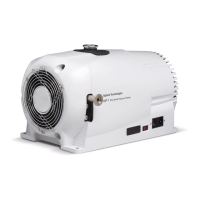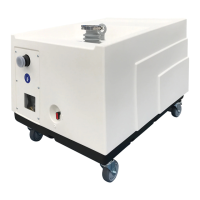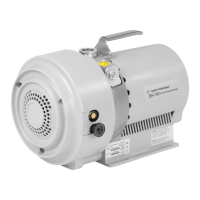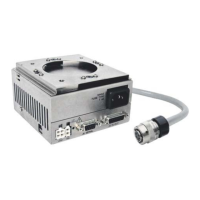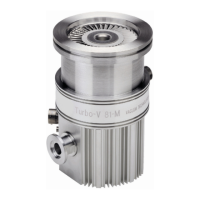Do you have a question about the Agilent Technologies LC Series and is the answer not in the manual?
Provides an overview of the pump, instrument, and connectors.
Details the Agilent 1260 Infinity II Isocratic Pump, its features, and product description.
Covers the Agilent 1260 Infinity II Quaternary Pump VL, product description, and features.
Describes the Agilent 1260 Infinity II Quaternary Pump, its product description, and features.
Details the Agilent 1260 Infinity II Bio-inert Pump, its product description, and features.
Explains the low pressure mixing pumps and their hydraulic path for quaternary and bio-inert pumps.
Discusses the design for safe leak and waste handling, including solvent cabinet and leak plane outlets.
Outlines environmental requirements for optimal instrument performance, including power and bench space.
Provides physical specifications for the Isocratic, Quaternary VL, Quaternary, and Bio-inert pumps.
Details performance specifications for the Agilent 1260 Infinity II Isocratic Pump.
Explains the procedure for turning the instrument on and off using the power switch and control software.
Describes the meaning of the module status indicator and its six possible conditions.
Offers advice on daily/weekly tasks and powering up/shutting down the pump for optimal operation.
Details the steps for purging the pump and the use of seal wash for pump maintenance.
Provides recommendations for handling solvents, including bottle labeling and filter use.
Discusses safe handling of solvents, samples, and reagents, including waste container requirements.
Offers tips for successful pump operation, including solvent cabinet placement and purge valve frit checks.
Guides on generic operation and setting up module-specific parameters using the G4208A Instant Pilot.
Explains how to set up the pump using the instrument control interface, including configuration and signals.
Provides recommendations on solvent usage, filtering, and avoiding corrosion.
Lists materials used in the flow path for different pump models, detailing their specifications.
Describes the high-quality materials used in the Bio-inert LC system for optimum inertness.
Details material properties and compatibility with solvents, including PEEK, Polyimide, PE, Tantalum, Stainless Steel, and Titanium.
Explains the problems caused by algae in HPLC systems and how to prevent them.
Offers suggestions to prolong solvent filter lifetime and maintain module performance.
Discusses the use of specific valves and seals for normal phase applications and potential issues.
Explains the importance of the built-in degasser in the quaternary pump and its inclusion in the flow path.
Provides guidance on priming the vacuum degasser for first-time use or after extended periods of inactivity.
Offers advice on using the MCGV with salt solutions and organic solvents to avoid precipitation and ensure performance.
Explains when the seal wash function is recommended, particularly with concentrated buffer solutions.
Guides on selecting appropriate pump seals for different applications, including normal phase solvents.
Details how to optimize the compressibility compensation setting for best flow accuracy and mixing performance.
Describes the available tests that vary depending on the user interface used.
Explains the Agilent Lab Advisor Software's capabilities for managing labs and performing diagnostics.
Explains when and how error messages are displayed, including their impact on module operation.
Lists and describes common error messages applicable to all Agilent HPLC modules, such as Timeout and Shutdown.
Details pump-specific error messages, including Solvent Zero Counter and Pressure errors.
Explains the System Pressure Test for checking LC system tightness and identifying leaks.
Describes the Leak Rate Test for verifying internal pump tightness and identifying leak sources.
Introduces the module's design for easy repair, focusing on front-accessible maintenance.
Lists critical warnings and cautions related to toxic solvents, electrical shock, and personal injury during maintenance.
Outlines simple repair procedures that can be performed without opening the main cover.
Provides instructions for cleaning the module case using a soft cloth and water or mild detergent.
Details the procedure for removing and installing the front doors of the module.
Explains the importance of a functional solvent filter and how to check and replace it.
Guides on exchanging the passive inlet valve if it is internally leaking or showing backflow.
Provides instructions for exchanging the outlet valve if it is internally leaking.
Describes how to exchange the purge valve frit or the entire purge valve if contaminated or leaking.
Details the procedure for replacing the O-ring on the purge valve when it is damaged.
Explains how to remove the pump head assembly for seal or piston exchange.
Covers maintenance procedures for pump heads that do not have a seal wash option.
Details maintenance procedures for pump heads equipped with a seal wash option.
Guides on reinstalling the pump head assembly after maintenance or component replacement.
Outlines the seal wear-in procedure, including solvent usage and pressure settings.
Provides instructions for exchanging the MCGV, emphasizing regular flushing to prevent issues.
Details how to replace the solvent selection valve in the isocratic pump if it is leaking or blocked.
Guides on exchanging the active inlet valve or its cartridge if it is internally leaking.
Explains how to exchange the seal wash cartridge, including removing and installing the peristaltic pump.
Describes how to replace parts of the leak handling system, such as the leak adapter and tubing.
Provides instructions on upgrading or downgrading the module's firmware using Agilent Lab Advisor software.
Lists the items included in the Accessory Kit G7111-68755 and G5654-68755.
Details the components of the Pump Head 1200 SL without Seal Wash (G1312-60056).
Lists components for pump head assemblies with seal wash (G1312-60045) and bio-inert versions.
Shows the different outlet valve part numbers for various Agilent pump models.
Lists the parts included in the Purge Valve Assembly for different pump models.
Details the components for the Active Inlet Valve Assembly, including upgrade kits and cartridges.
Lists optional parts for the 1260 Infinity II Max Uptime Kit, sold separately.
Lists optional parts for the 1260 Infinity II Max Uptime Kit Bio, sold separately.
Lists optional parts for the 1260 Infinity II Low Dispersion Kit MCT.
Shows the contents of the HPLC System Tool Kit, including various tools and adapters.
Describes the Solvent Cabinet Kit and provides a reference for its usage guideline.
Lists the components included in the Bottle Head Assembly (G7120-60007).
Illustrates the hydraulic flow path for the Quaternary Pump, detailing capillary and tubing connections.
Illustrates the hydraulic flow path for the Isocratic Pump, detailing capillary and tubing connections.
Provides a general overview of available cables, including Analog, Remote, and CAN cables.
Describes Analog cables, including connections to A/D converters and BNC connectors.
Details various remote cables, including ERI, ERI-APG, and ERI-APG-RJ45 types with pin assignments.
Explains CAN and LAN cables used for module-to-module communication and network connectivity.
Describes RS-232 cables used for connecting Agilent modules to a PC.
Explains how to connect modules to a printer, specifically for USB Flash Drive usage.
Explains the instrument firmware structure, including resident and main system sections.
Details the electrical connections for CAN, ERI, LAN, USB, and power input, including cable usage notes.
Shows a diagram of the module's rear view, highlighting connectors and labels.
Provides a table summarizing the interfaces available on Agilent InfinityLab LC Series modules (CAN, USB, LAN, RS-232, Analog, APG/ERI).
Explains the location and function of the 6-bit configuration switch for LAN and initialization settings.
Covers special settings like Boot-Resident/Main modes and Forced Cold Start for firmware updates or parameter resets.
Describes the industrial design and packaging concept of the module, focusing on E-PAC.
Explains the EMF feature for monitoring component usage and providing maintenance feedback.
Outlines initial steps for LAN configuration, including noting the MAC address and connecting the interface.
Explains the necessity of configuring TCP/IP parameters (IP address, Subnet Mask, Gateway) for network operation.
Describes the location and function of the configuration switches for LAN and initialization modes.
Details the selectable initialization modes (Default IP, Stored IP, DHCP) and their principles.
Provides general information about DHCP and its use for automatic IP parameter configuration.
Explains how to manually configure parameters stored in non-volatile memory, including using Telnet.
Covers essential safety precautions for operating, servicing, and repairing the instrument.
Warns about toxic, flammable, and hazardous solvents and provides handling precautions.
Explains various safety symbols used on the apparatus and their meanings.
States product compliance with the European WEEE Directive and disposal requirements.
Discusses screened cables for radio interference protection and compliance with EMC regulations.
Provides the manufacturer's declaration regarding sound pressure emission levels.
Directs users to the Agilent website for the latest product and service information.
Provides an overview of the pump, instrument, and connectors.
Details the Agilent 1260 Infinity II Isocratic Pump, its features, and product description.
Covers the Agilent 1260 Infinity II Quaternary Pump VL, product description, and features.
Describes the Agilent 1260 Infinity II Quaternary Pump, its product description, and features.
Details the Agilent 1260 Infinity II Bio-inert Pump, its product description, and features.
Explains the low pressure mixing pumps and their hydraulic path for quaternary and bio-inert pumps.
Discusses the design for safe leak and waste handling, including solvent cabinet and leak plane outlets.
Outlines environmental requirements for optimal instrument performance, including power and bench space.
Provides physical specifications for the Isocratic, Quaternary VL, Quaternary, and Bio-inert pumps.
Details performance specifications for the Agilent 1260 Infinity II Isocratic Pump.
Explains the procedure for turning the instrument on and off using the power switch and control software.
Describes the meaning of the module status indicator and its six possible conditions.
Offers advice on daily/weekly tasks and powering up/shutting down the pump for optimal operation.
Details the steps for purging the pump and the use of seal wash for pump maintenance.
Provides recommendations for handling solvents, including bottle labeling and filter use.
Discusses safe handling of solvents, samples, and reagents, including waste container requirements.
Offers tips for successful pump operation, including solvent cabinet placement and purge valve frit checks.
Guides on generic operation and setting up module-specific parameters using the G4208A Instant Pilot.
Explains how to set up the pump using the instrument control interface, including configuration and signals.
Provides recommendations on solvent usage, filtering, and avoiding corrosion.
Lists materials used in the flow path for different pump models, detailing their specifications.
Describes the high-quality materials used in the Bio-inert LC system for optimum inertness.
Details material properties and compatibility with solvents, including PEEK, Polyimide, PE, Tantalum, Stainless Steel, and Titanium.
Explains the problems caused by algae in HPLC systems and how to prevent them.
Offers suggestions to prolong solvent filter lifetime and maintain module performance.
Discusses the use of specific valves and seals for normal phase applications and potential issues.
Explains the importance of the built-in degasser in the quaternary pump and its inclusion in the flow path.
Provides guidance on priming the vacuum degasser for first-time use or after extended periods of inactivity.
Offers advice on using the MCGV with salt solutions and organic solvents to avoid precipitation and ensure performance.
Explains when the seal wash function is recommended, particularly with concentrated buffer solutions.
Guides on selecting appropriate pump seals for different applications, including normal phase solvents.
Details how to optimize the compressibility compensation setting for best flow accuracy and mixing performance.
Describes the available tests that vary depending on the user interface used.
Explains the Agilent Lab Advisor Software's capabilities for managing labs and performing diagnostics.
Explains when and how error messages are displayed, including their impact on module operation.
Lists and describes common error messages applicable to all Agilent HPLC modules, such as Timeout and Shutdown.
Details pump-specific error messages, including Solvent Zero Counter and Pressure errors.
Explains the System Pressure Test for checking LC system tightness and identifying leaks.
Describes the Leak Rate Test for verifying internal pump tightness and identifying leak sources.
Introduces the module's design for easy repair, focusing on front-accessible maintenance.
Lists critical warnings and cautions related to toxic solvents, electrical shock, and personal injury during maintenance.
Outlines simple repair procedures that can be performed without opening the main cover.
Provides instructions for cleaning the module case using a soft cloth and water or mild detergent.
Details the procedure for removing and installing the front doors of the module.
Explains the importance of a functional solvent filter and how to check and replace it.
Guides on exchanging the passive inlet valve if it is internally leaking or showing backflow.
Provides instructions for exchanging the outlet valve if it is internally leaking.
Describes how to exchange the purge valve frit or the entire purge valve if contaminated or leaking.
Details the procedure for replacing the O-ring on the purge valve when it is damaged.
Explains how to remove the pump head assembly for seal or piston exchange.
Covers maintenance procedures for pump heads that do not have a seal wash option.
Details maintenance procedures for pump heads equipped with a seal wash option.
Guides on reinstalling the pump head assembly after maintenance or component replacement.
Outlines the seal wear-in procedure, including solvent usage and pressure settings.
Provides instructions for exchanging the MCGV, emphasizing regular flushing to prevent issues.
Details how to replace the solvent selection valve in the isocratic pump if it is leaking or blocked.
Guides on exchanging the active inlet valve or its cartridge if it is internally leaking.
Explains how to exchange the seal wash cartridge, including removing and installing the peristaltic pump.
Describes how to replace parts of the leak handling system, such as the leak adapter and tubing.
Provides instructions on upgrading or downgrading the module's firmware using Agilent Lab Advisor software.
Lists the items included in the Accessory Kit G7111-68755 and G5654-68755.
Details the components of the Pump Head 1200 SL without Seal Wash (G1312-60056).
Lists components for pump head assemblies with seal wash (G1312-60045) and bio-inert versions.
Shows the different outlet valve part numbers for various Agilent pump models.
Lists the parts included in the Purge Valve Assembly for different pump models.
Details the components for the Active Inlet Valve Assembly, including upgrade kits and cartridges.
Lists optional parts for the 1260 Infinity II Max Uptime Kit, sold separately.
Lists optional parts for the 1260 Infinity II Max Uptime Kit Bio, sold separately.
Lists optional parts for the 1260 Infinity II Low Dispersion Kit MCT.
Shows the contents of the HPLC System Tool Kit, including various tools and adapters.
Describes the Solvent Cabinet Kit and provides a reference for its usage guideline.
Lists the components included in the Bottle Head Assembly (G7120-60007).
Illustrates the hydraulic flow path for the Quaternary Pump, detailing capillary and tubing connections.
Illustrates the hydraulic flow path for the Isocratic Pump, detailing capillary and tubing connections.
Provides a general overview of available cables, including Analog, Remote, and CAN cables.
Describes Analog cables, including connections to A/D converters and BNC connectors.
Details various remote cables, including ERI, ERI-APG, and ERI-APG-RJ45 types with pin assignments.
Explains CAN and LAN cables used for module-to-module communication and network connectivity.
Describes RS-232 cables used for connecting Agilent modules to a PC.
Explains how to connect modules to a printer, specifically for USB Flash Drive usage.
Explains the instrument firmware structure, including resident and main system sections.
Details the electrical connections for CAN, ERI, LAN, USB, and power input, including cable usage notes.
Shows a diagram of the module's rear view, highlighting connectors and labels.
Provides a table summarizing the interfaces available on Agilent InfinityLab LC Series modules (CAN, USB, LAN, RS-232, Analog, APG/ERI).
Explains the location and function of the 6-bit configuration switch for LAN and initialization settings.
Covers special settings like Boot-Resident/Main modes and Forced Cold Start for firmware updates or parameter resets.
Describes the industrial design and packaging concept of the module, focusing on E-PAC.
Explains the EMF feature for monitoring component usage and providing maintenance feedback.
Outlines initial steps for LAN configuration, including noting the MAC address and connecting the interface.
Explains the necessity of configuring TCP/IP parameters (IP address, Subnet Mask, Gateway) for network operation.
Describes the location and function of the configuration switches for LAN and initialization modes.
Details the selectable initialization modes (Default IP, Stored IP, DHCP) and their principles.
Provides general information about DHCP and its use for automatic IP parameter configuration.
Explains how to manually configure parameters stored in non-volatile memory, including using Telnet.
Covers essential safety precautions for operating, servicing, and repairing the instrument.
Warns about toxic, flammable, and hazardous solvents and provides handling precautions.
Explains various safety symbols used on the apparatus and their meanings.
States product compliance with the European WEEE Directive and disposal requirements.
Discusses screened cables for radio interference protection and compliance with EMC regulations.
Provides the manufacturer's declaration regarding sound pressure emission levels.
Directs users to the Agilent website for the latest product and service information.
| Brand | Agilent Technologies |
|---|---|
| Model | LC Series |
| Category | Water Pump |
| Language | English |
